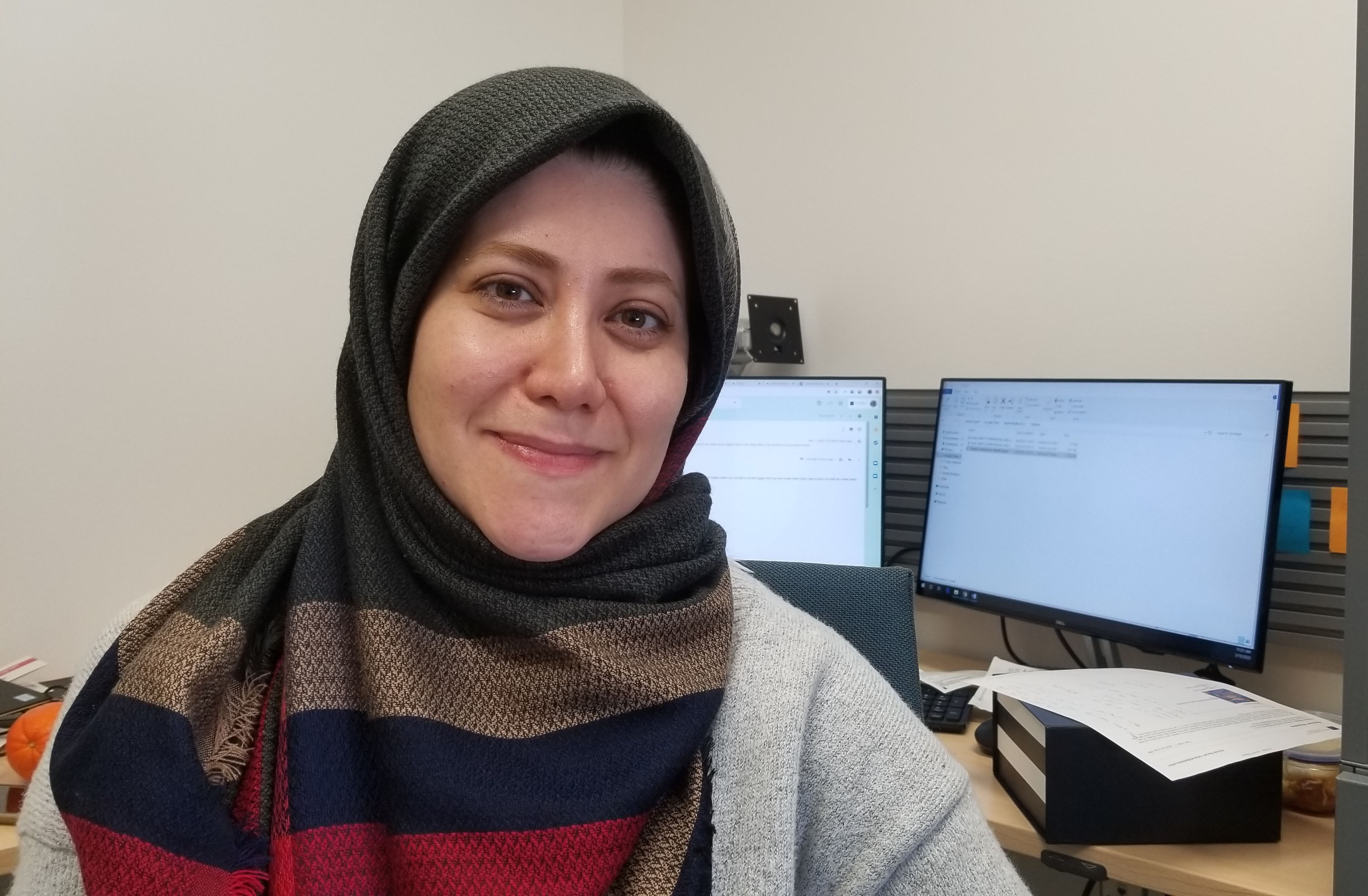Bahareh’s Tips on Pitching to Investors
April 1, 2020

Last month, UAF scientist Bahareh Barati stepped outside of her comfort zone to give a three-minute pitch to possible investors.
“It was very intimidating at first,” Barati said of the experience. “In academia, as a scientist, you are trained to always be humble, to state results based on the hypothesis.”
In a business pitch, however, the quiet-spoken researcher said that you have to be confident – overly confident. You need to talk about your innovation as a “disruptive technology,” or a product that can create a new market and value network.
“Your pitch needs to give the potential investors confidence that your innovation is money-making, and not just a science project,” said Barati.
Barati’s Cerebral Oximetry for Lab Animals device has already proven it is not just a science project. The team, including Barati and her partner Kambiz Pourrezaei, has completed a mini I-Corps course with LA Node, a two-week version of the flagship eight-week I-Corps program, and received Phase I SBIR funding. Barati and team member, Pourrezaei, received a supplement for market analysis conducted by Foresight Science and Technology through the Niche Assessment Program.
“We received exciting feedback from key opinion leaders and top market players and now it was time to talk to investors,” said Barati.
OIPC’s Ky Holland suggested pitching at the 2020 Alaska Angel Conference, where angel investors meet and learn about potential investment opportunities, and entrepreneurs can receive up to $200,000 in angel investment.
The AAC is a 12-week program where entrepreneurs give 3-minute and 10-minute pitches to potential investors and on April 23, 2020, the winning investments are announced in Juneau.
“I find myself giving a short pitch all the time, an elevator speech,” said Barati of the 3-minute and 10-minute pitches. “This was the first formal pitch in a competition.”
There were many things she learned during this time; here are a few:
Be prepared. “Preparation is very important.” Barati says. “It takes at least three days to prepare for three minutes in business.”
Be confident in your business. “In business, you cannot pretend.” She says you must truly believe in your innovation and your business.
Know your audience. “Sometimes you might pitch to a group of investors who are very tech-savvy, and sometimes you might have physicians who care about their patients and their outcome more,” Barati says. She suggests avoiding technical jargon, and have your vision clearly stated.
“You don’t want to scale down your talk in terms of technical content, but at the same time you want to be clear and concise.”
Being prepared to step out of your comfort zone to move your innovation to commercialization can be daunting, especially for researchers who often spend a lot of time alone in their labs. However, doing so could be what makes an amazing research idea become a world-changing product that many could benefit from.
To learn more about pitching your idea or the process of getting it commercialized, contact Alaska Center ICE.


